A trip to Whitby – Dracula, Captain Cook and the Scoresbys
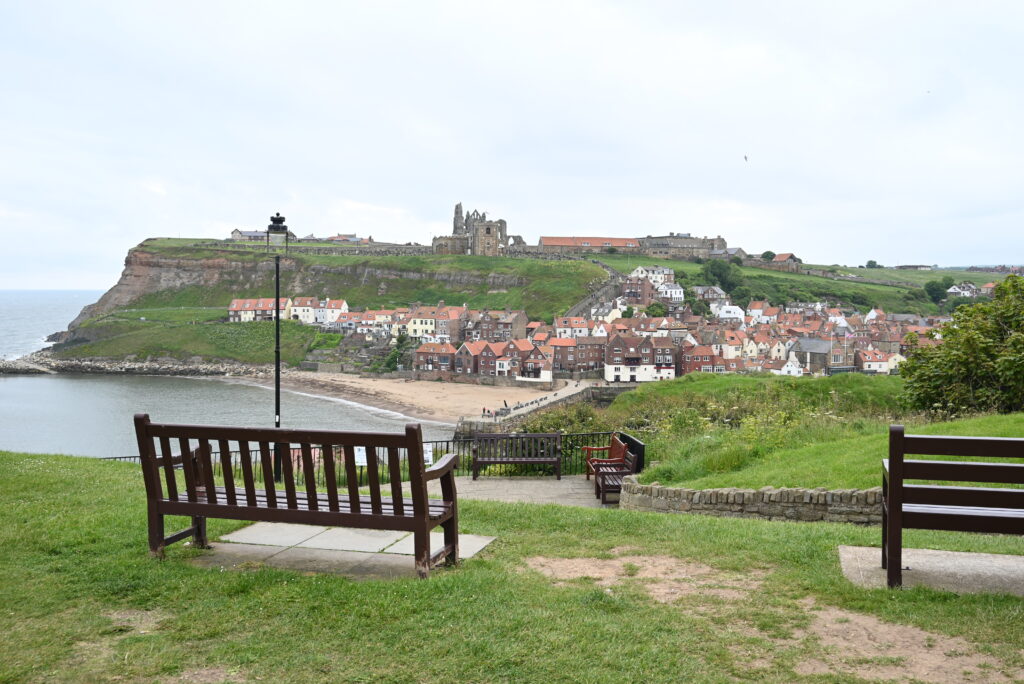
A younger member of the Sheard household is studying literature (and fancies herself a bit of a Goth), so we had a trip to Whitby in North Yorkshire to see what we could discover about Bram Stoker’s inspiration for Dracula.
Vampires aside, Whitby of course has a proud maritime history. Captain James Cook was born and lived nearby and explored huge previously uncharted parts of the world.
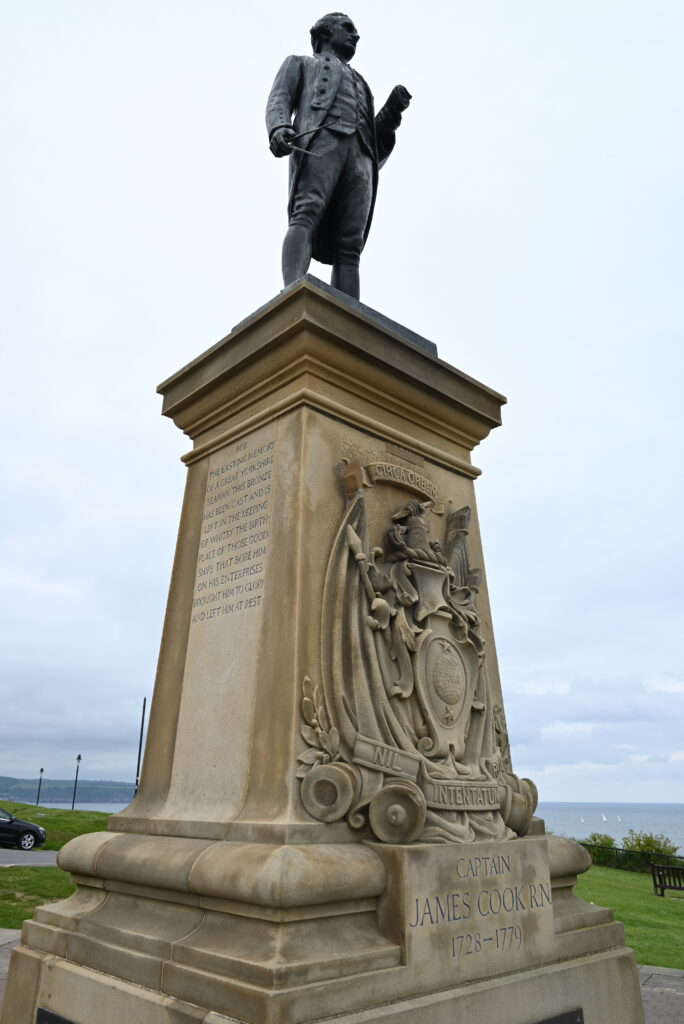
The focus of our trip however was Dracula, written by Bram Stoker, a frequent visitor to Whitby.
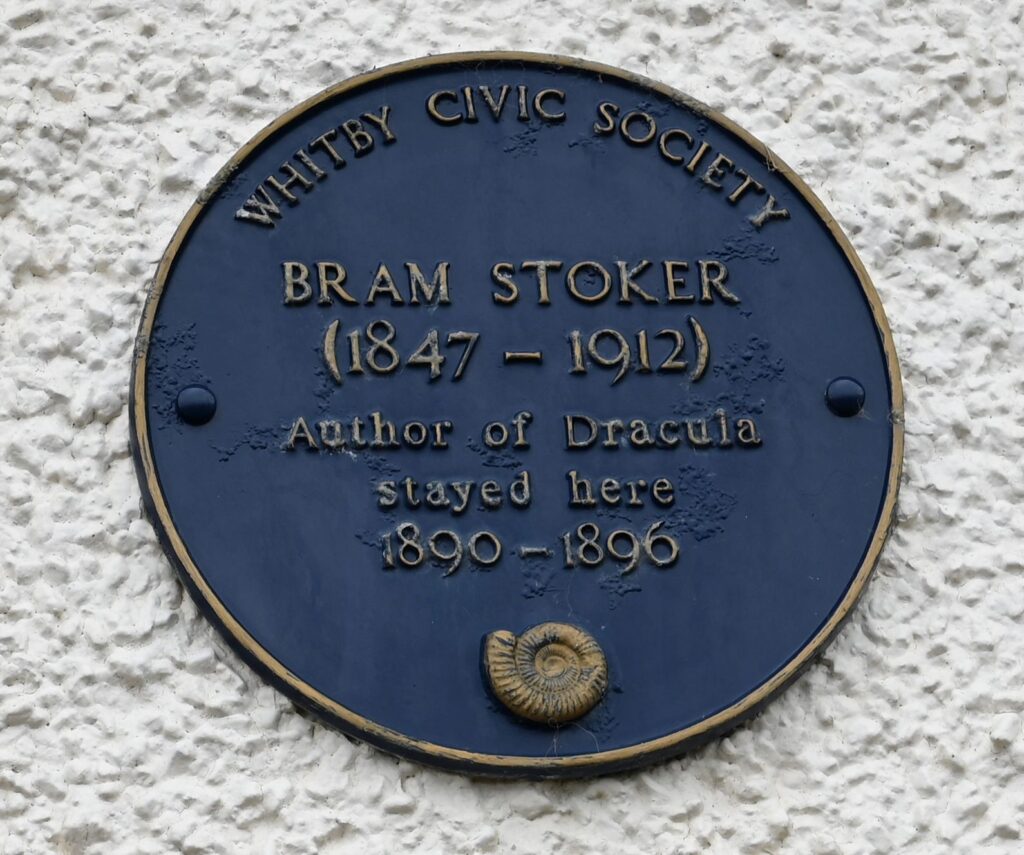
In the story, Dracula arrived at Whitby by sea and some of the novel is set in the graveyard of St Mary’s Church, near the Abbey.
Wandering around the churchyard, we didn’t find any vampires but we did find numerous Master Mariners. Many of the graves are actually memorial stones to those lost at sea.
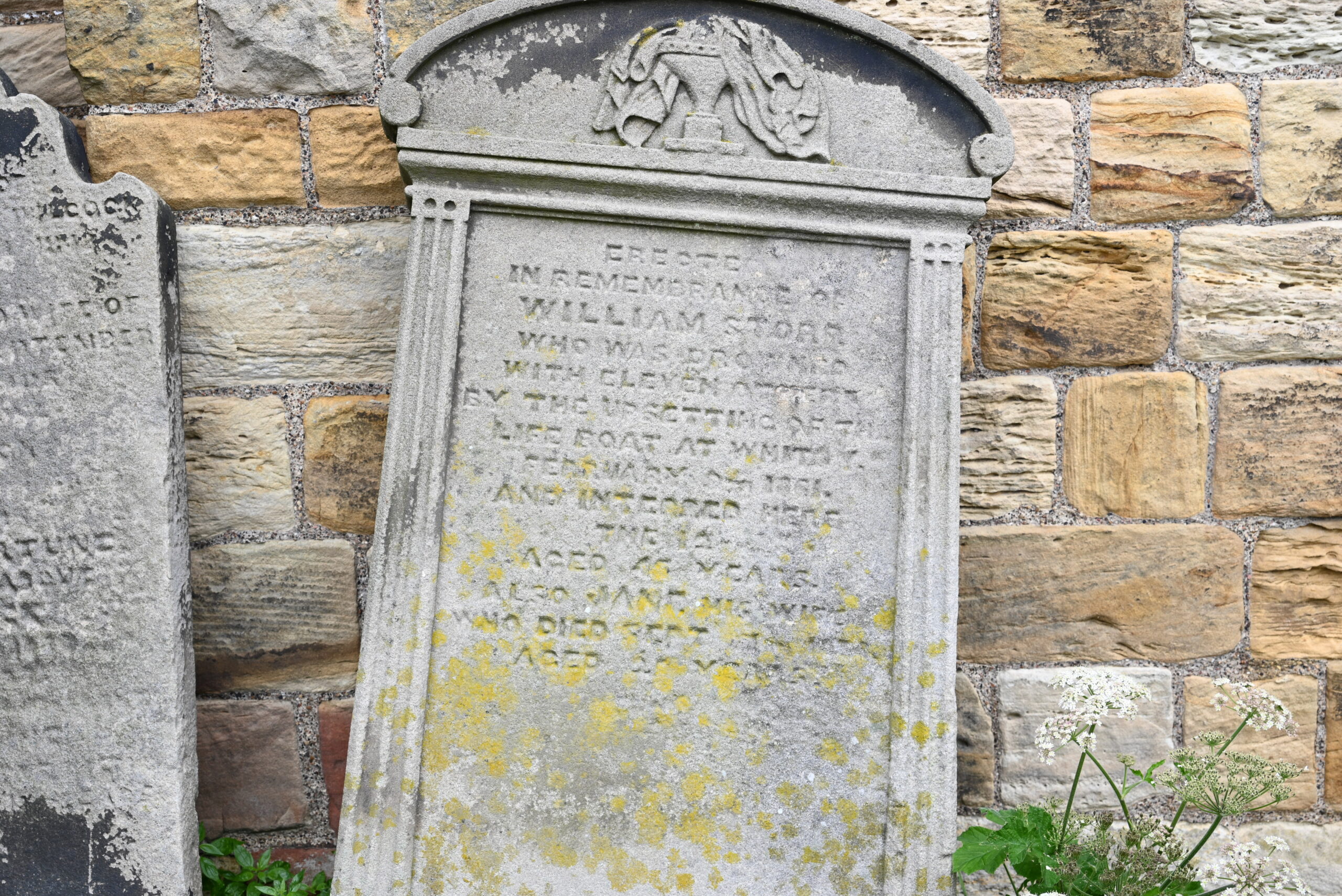
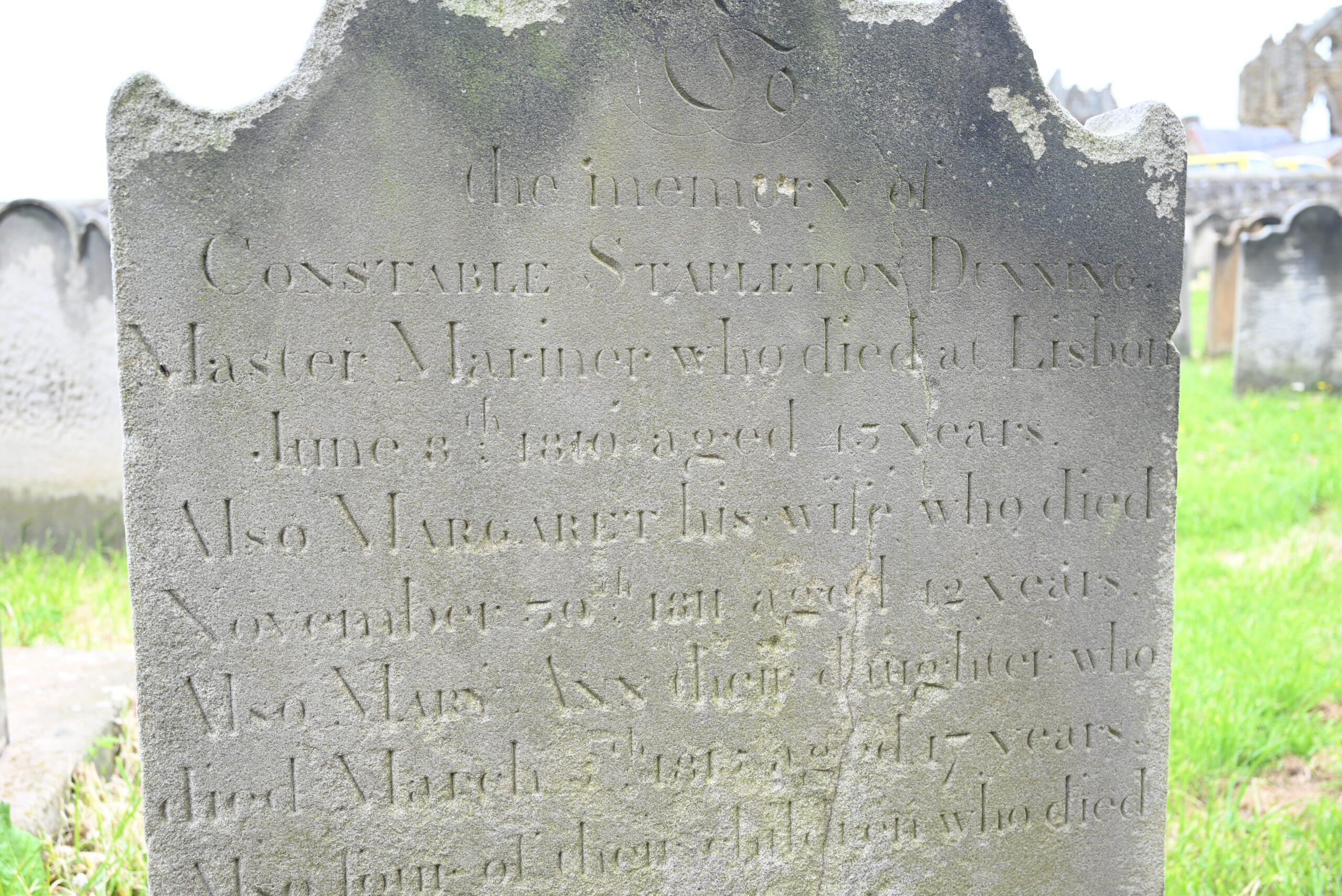
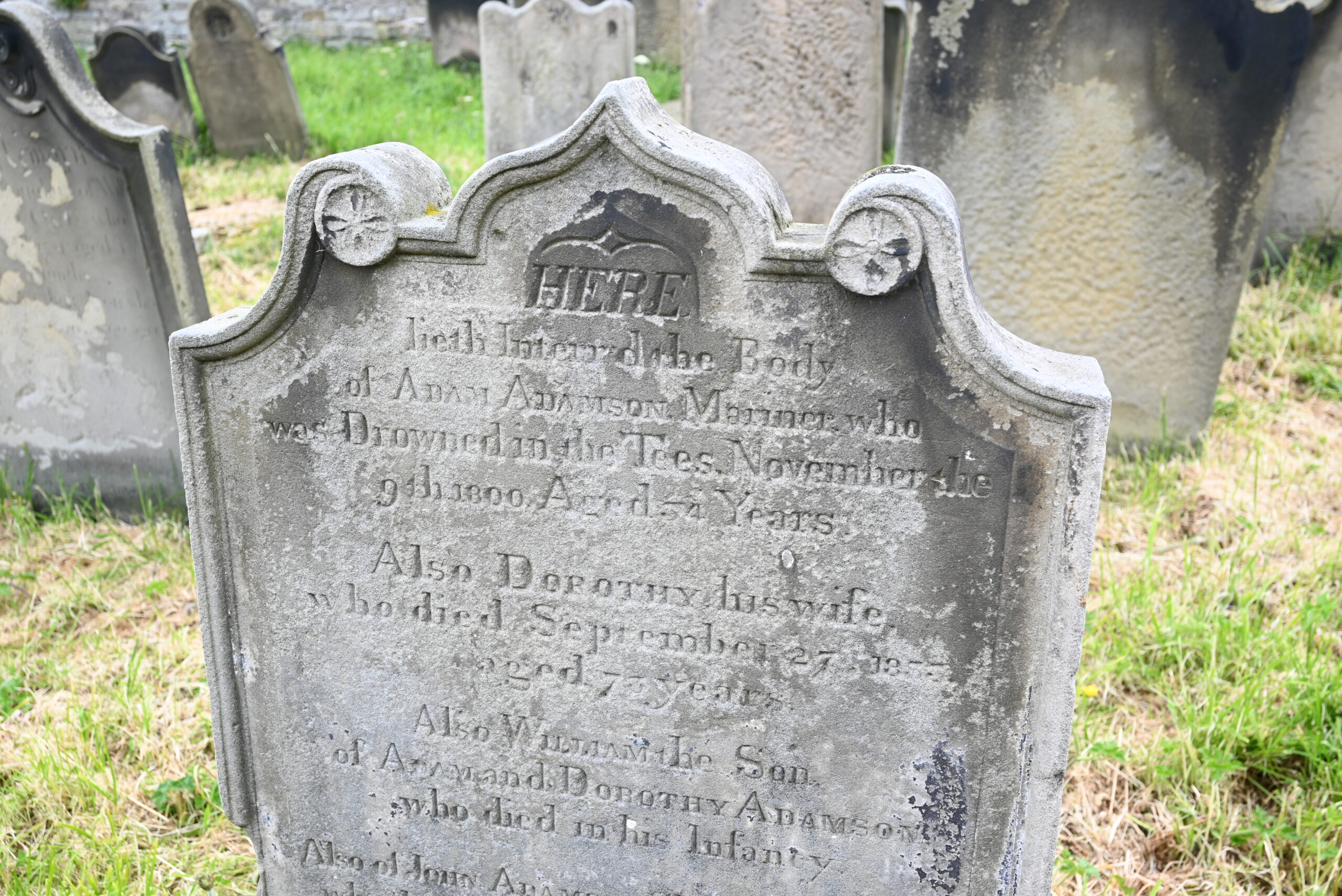
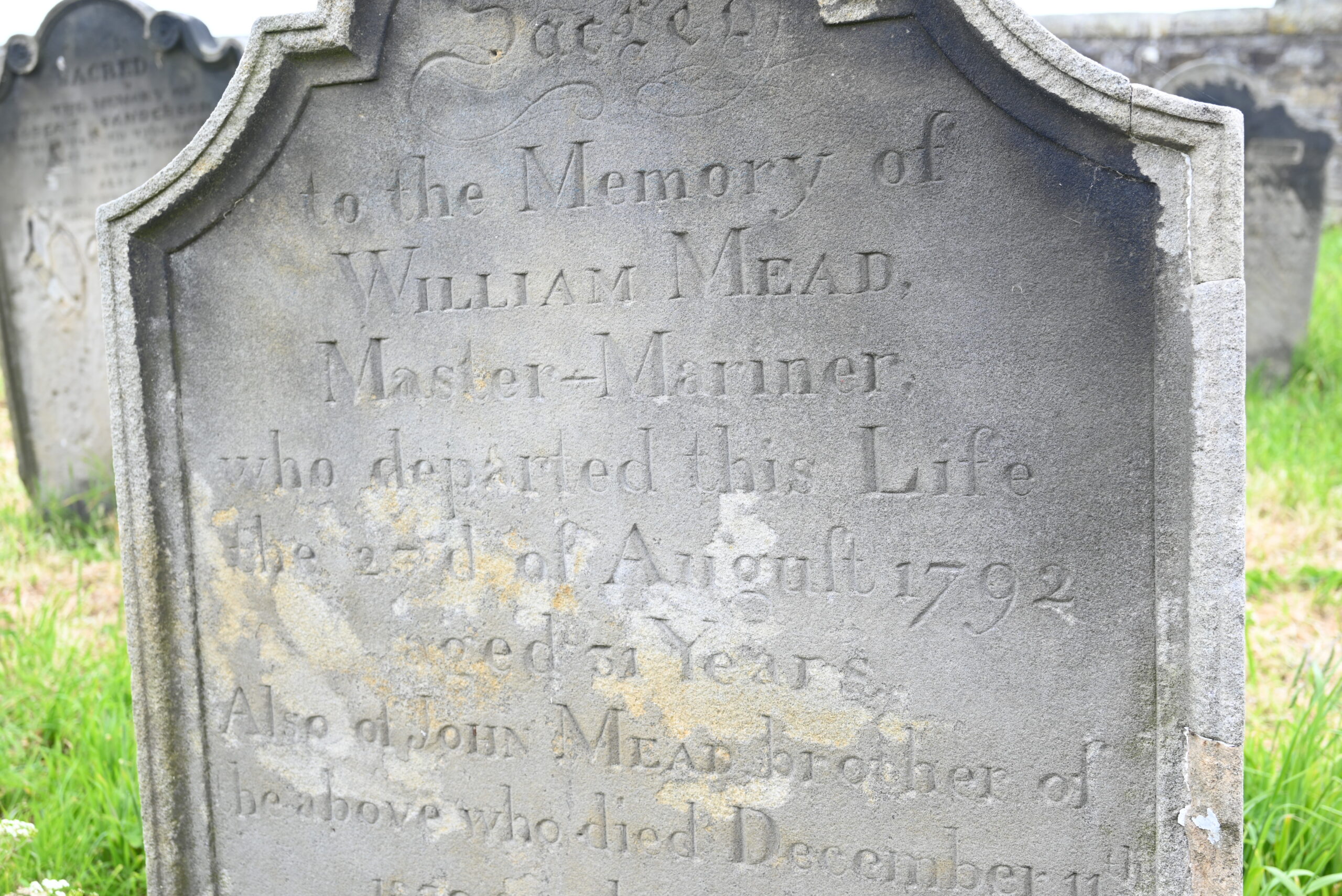
Nearby in the churchyard, however, we located something of significant interest historically and scientifically – the grave of William Scoresby.
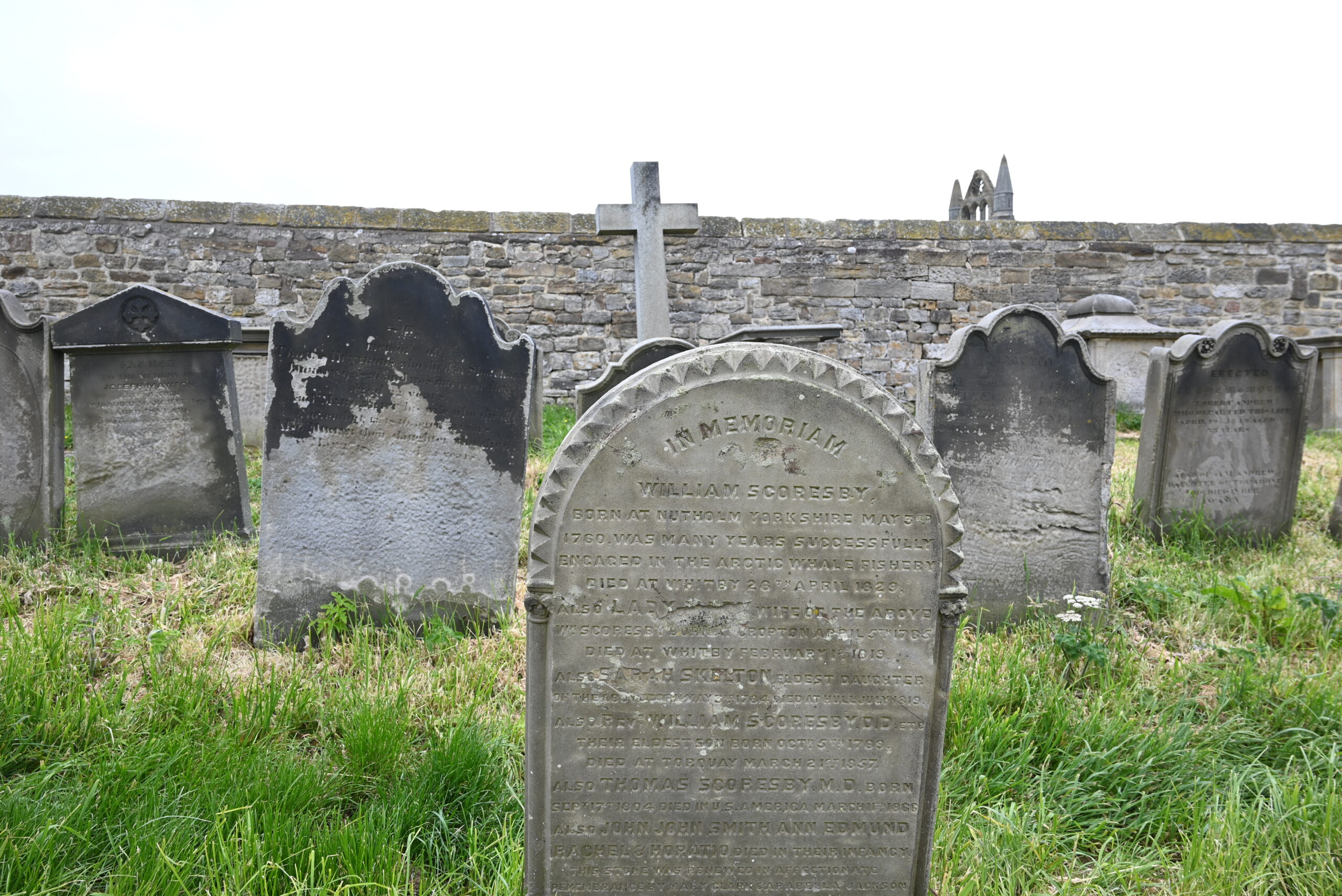
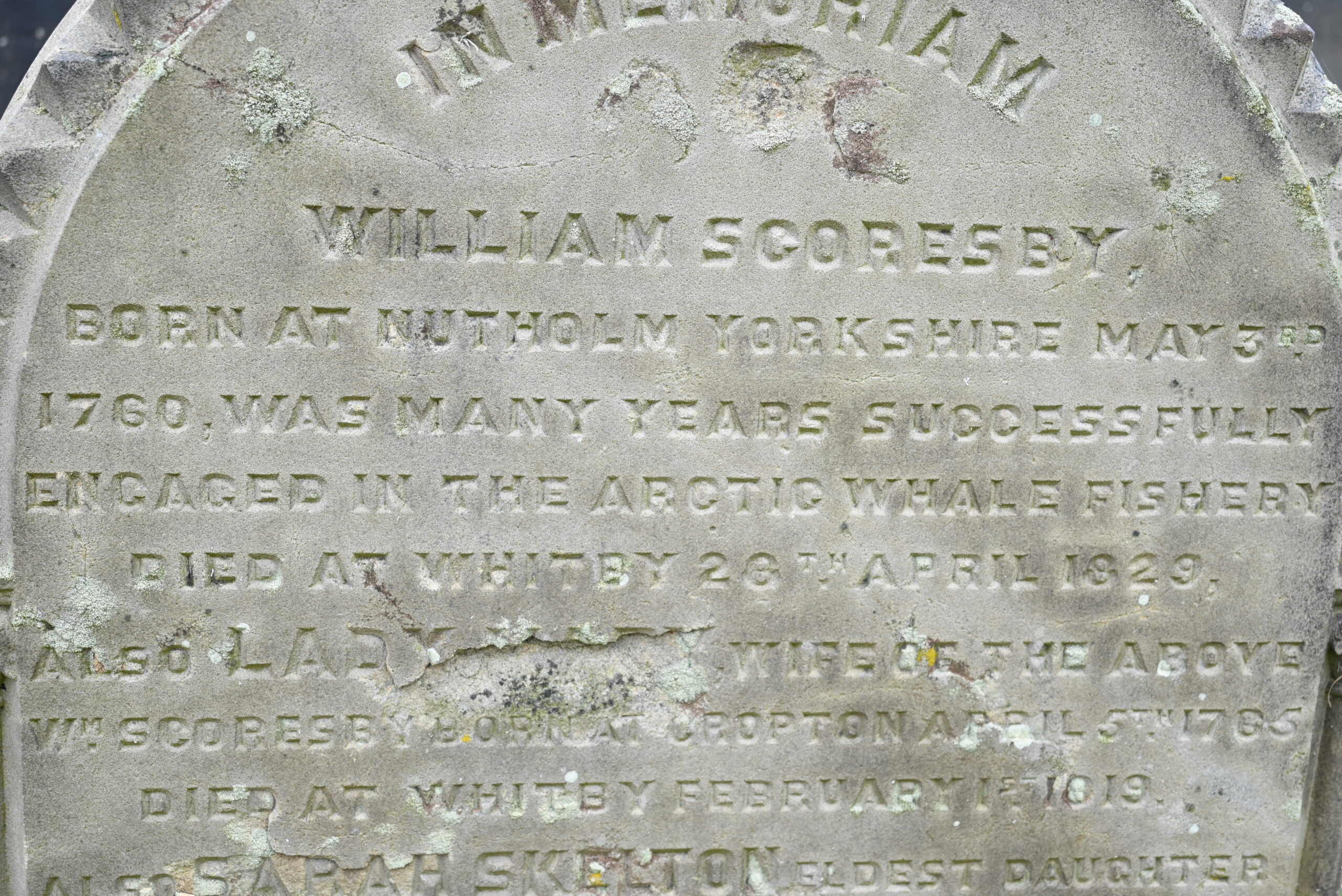
William Scoresby made his fortune in Arctic whaling. He is often credited as the inventor of the ship’s crows nest. Elevated lookouts on ships may have existed prior to Mr Scoresby, but he apparently did originate the barrel crows nest.
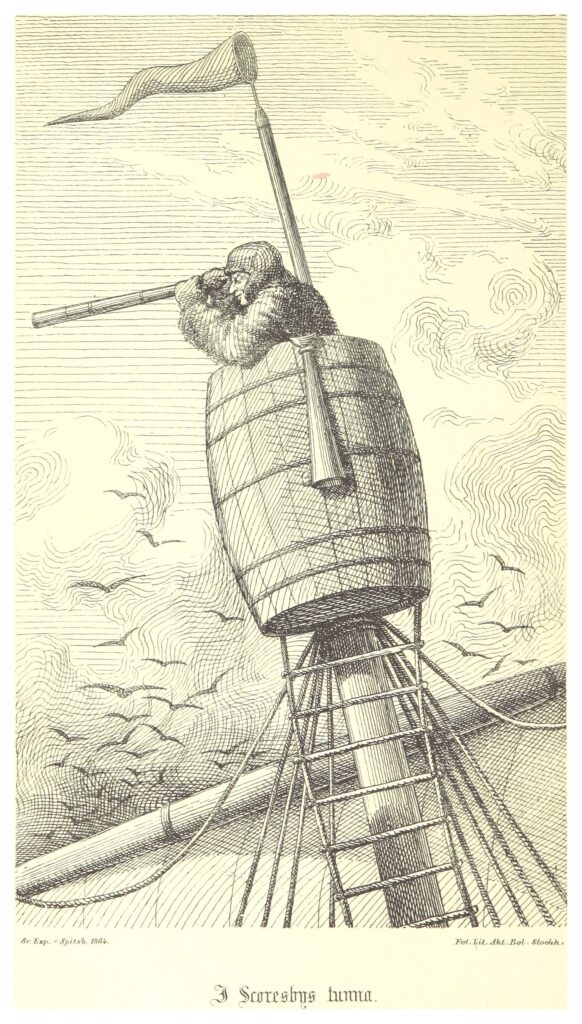
In the church itself is a chair known as the Scoresby Chair, which was carved from the remains of the vessel ROYAL CHARTER, on which William’s son, Rev William Scoresby carried out scientific experiments.
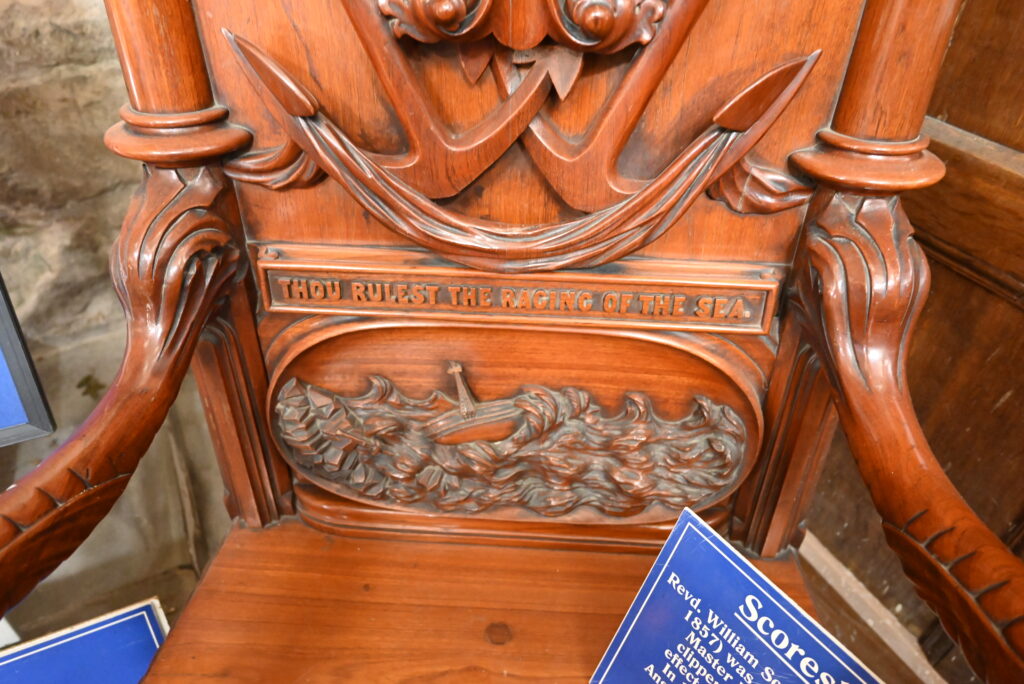
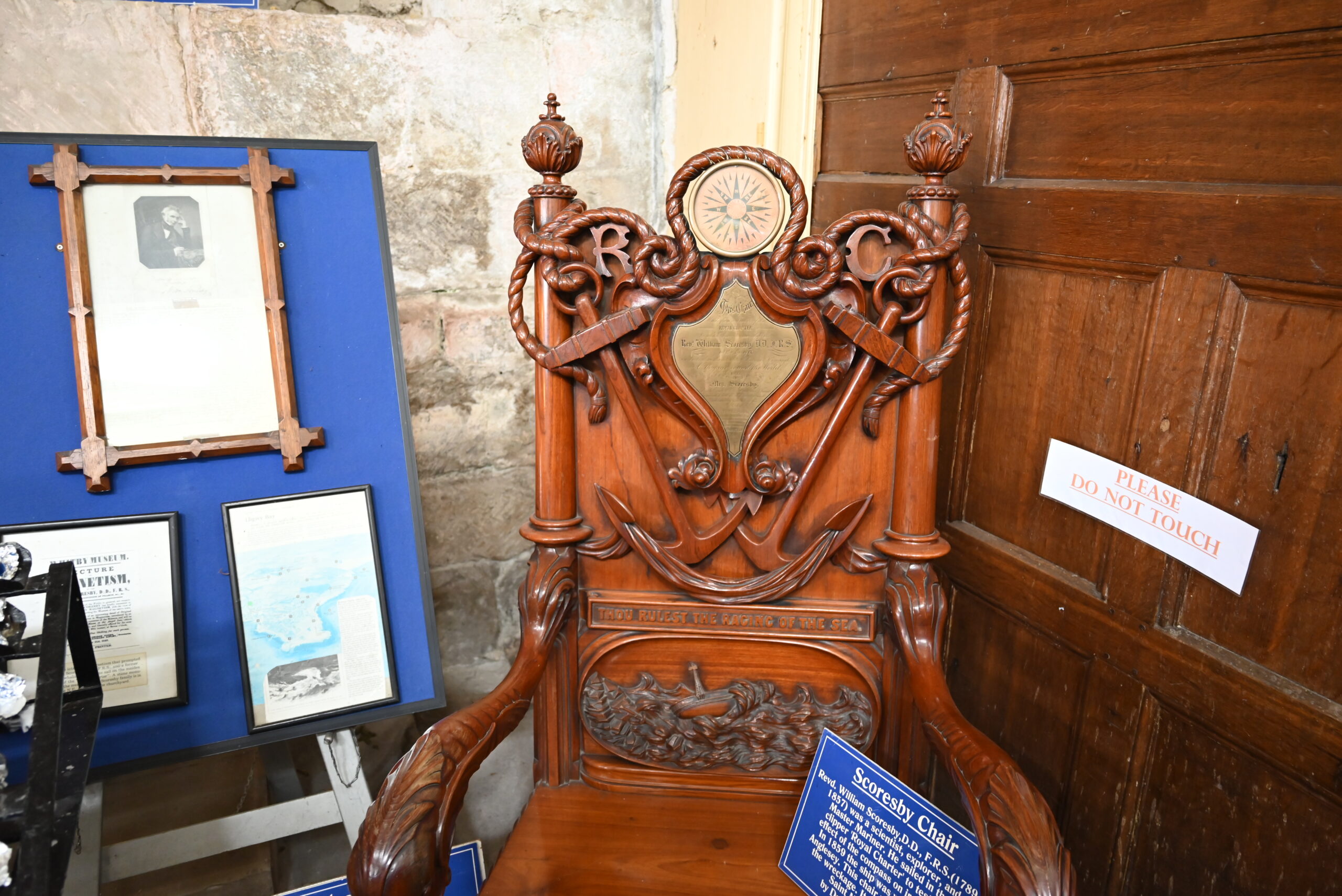
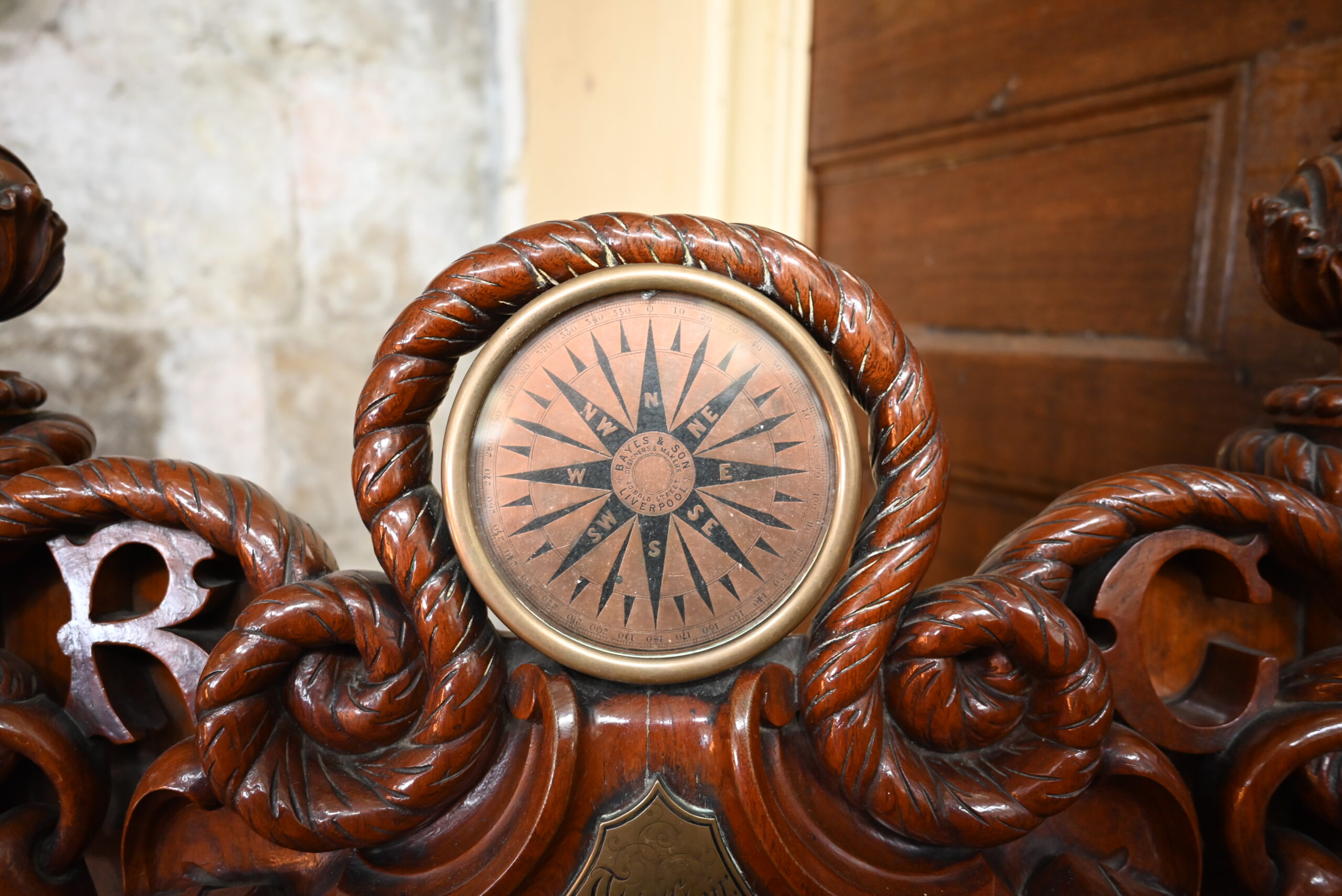
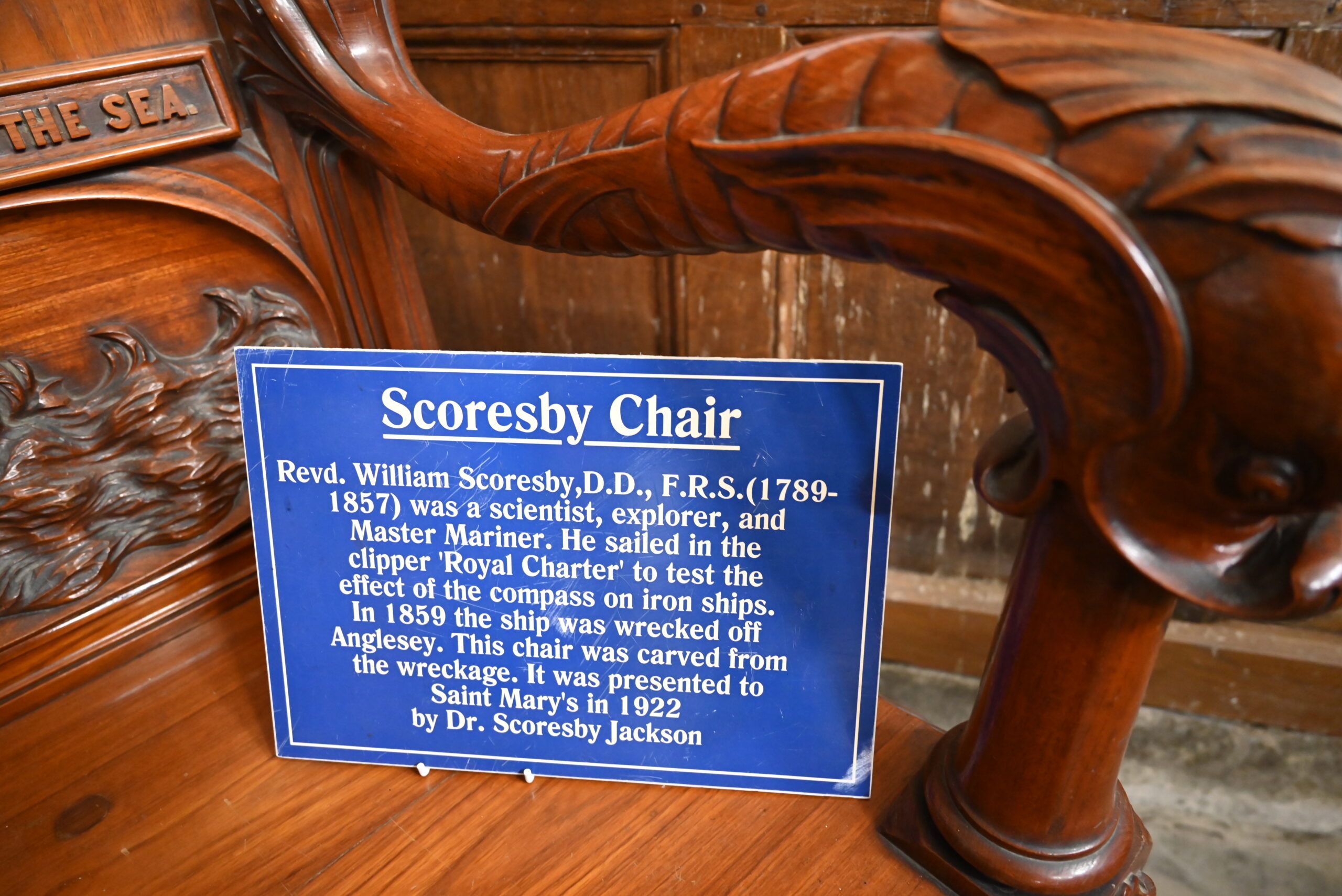
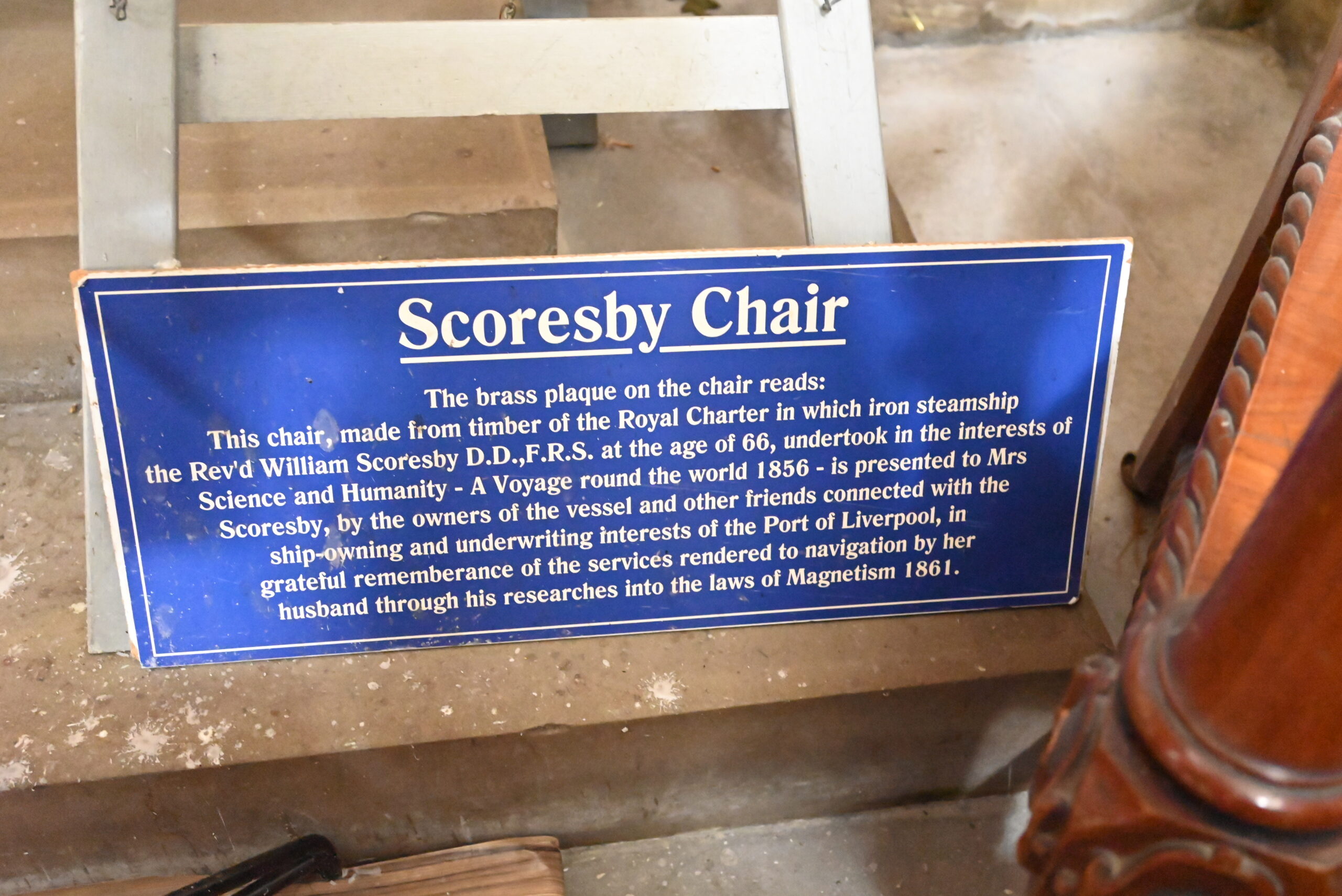
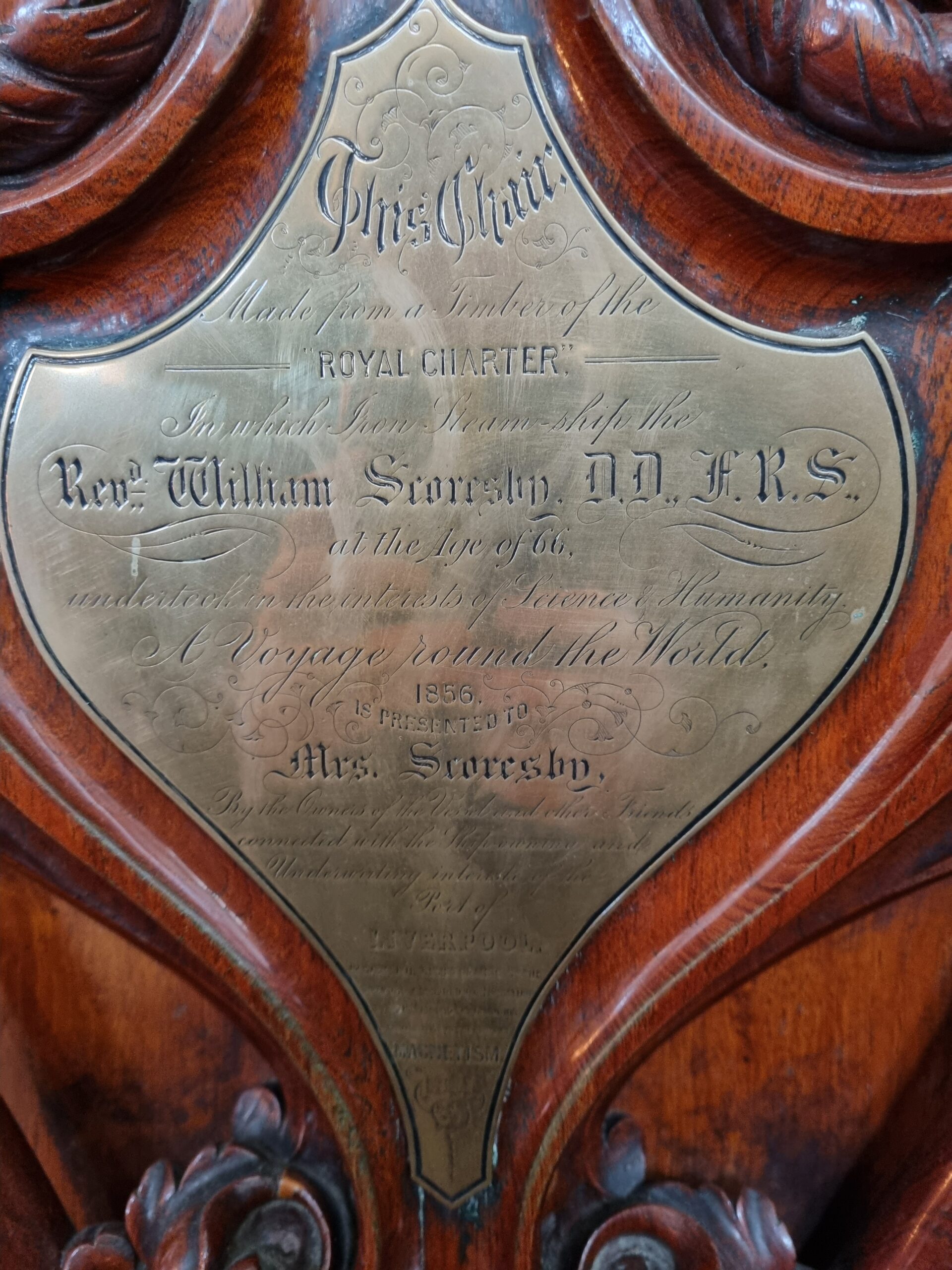

Rev William Scoresby spent many years working on the problem of compass deviation on ships incorporating iron as part of their structure. His views brought him into conflict with the Astronomer Royal, Sir George Biddell Airy with such vehemence that the issue became known as the Airy-Scoresby Controversy.
The problem is that iron in a ship’s structure can become magnetised and interfere with the operation of a navigation compass. Numerous ships were lost as a consequence.
Airy proposed a solution in which the ship would be “swung” through the points of the compass and the behaviour of the navigation compass checked at each orientation. Iron masses were then added in the vicinity of the compass to neutralise empirically the effect of the iron ship structure on the compass readings.
Scoresby believed this approach was so wrong as to be dangerous, and said so during a speech he gave to the British Association for the Advancement of Science in Liverpool. He believed the magnetic effect of the iron in a ship’s structure could suddenly and unpredictably change as a consequence of the vibrations set up by her motion in a seaway.
To investigate this, Rev Scoresby sailed around the world via Australia on ROYAL CHARTER in 1856 and took a large number of compass readings during the voyage. He aimed to demonstrate his theory of shifting magnetic influence by means of these observations.
Rev Scoresby died in 1857, and ROYAL CHARTER sank in 1859. The outcome of the controversy was that Airy’s system of compensating massess was retained, but one of Scoresby’s innovations, locating a “pole compass” on a mast and away from the ship’s iron structure, was incorporated to improve maritime safety.
A small part of ROYAL CHARTER lives on in the Scoresby chair and if you visit Whitby, I suggest you take a look.

Biotechnology, GMOs and Gene Editing – Part 1 – Introduction
I am sometimes asked to assist in matters which involve detection of genetically modified organisms (GMO). This is very important in some trades as many countries have lists of approved cultivars and stricly only those are permitted to be present. Organic trade is also highly sensitive to contamination by anything which is not appropriately certified as organic.
The technology to detect the presence of modified organisms, and identify any which are present, is very advanced but you need to have an understanding of what the tests are, how they work, and what they look for in order to understand what results do or do not mean. As with many things, the first step in testing is obtaining reliable samples. If the samples are not properly representative of the goods in question, the testing results will not be useful.
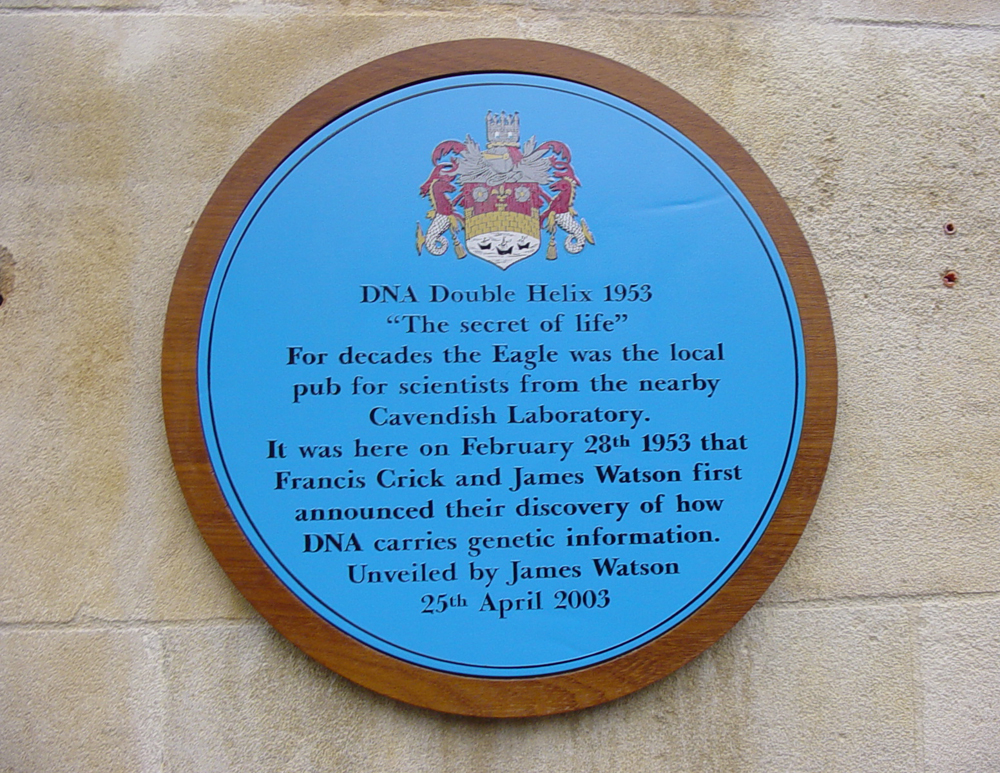
Anything related to genetics generally has its basis in DNA. DNA stands for deoxyribosenucleic acid and it contains the information required to make the proteins out of which life is built. The double-helix structure of DNA is like a ladder which has been twisted. The backbone structure (made up of deoxyribose sugars) forms the sides of the ladder and the rungs are nucleic acid pairs. Each chain of deoxyribose sugars has a sequence of nucleic acids, each of which is hydrogen bonded to a complementary nucleic acid on the other half of the ladder.
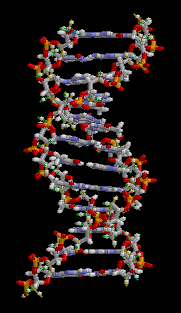
There are four nucleic acids, which are adenine, thymine, cytosine and guanine (denoted A, T, C and G). They are known as bases. A always pairs with T, C always pairs with G. Thus if you were to pull apart the two strands of DNA and throw one strand away, the nucleic acid sequence for the missing strand can be recreated by matching to the remaining strand. This property of DNA is what makes it possible for it to be reproduced. Thus, when DNA is duplicated in a cell, this happens by the DNA splitting into two strands, on each of which a replacement complemetary strand is created. Without this property, life as we know it would not be possible.
The genetic information in DNA consists of the bases and the order in which they are found. DNA is found in the nucleus of the cells and the information in it is used to make proteins and enzymes etc. The first stage in this process is that the DNA is transcribed to RNA. A part of the DNA is separated into two strands, and one strand is used to make an almost copy of part of the DNA sequence. RNA stands for ribose nucleic acid. This is very similar to DNA except the sugar backbone is ribose itself rather than deoxyribose. RNA consists of a sequence of bases which are complimentary to the DNA it has been transcribed from, but RNA does not use thymine; instead the RNA has uracil (U). Thus a DNA sequence made up of bases such as GATTACA would be transcribed into RNA as CTUUTGT.
The RNA transcription (referred to as messenger RNA or mRNA) is then transported out of the nucleus to a different part of the cell known as a ribosome. There the genetic information is translated into the product for which it codes. To do this, individual amino acids are added to a protein chain which gradually builds up to be the product. The bases on the mRNA are taken three at a time, and combinations of bases code for different amino acids. A group of three bases is known as a codon. The table below contains the so-called genetic code – i.e. what amino acid a given codon/combination of three bases codes for.
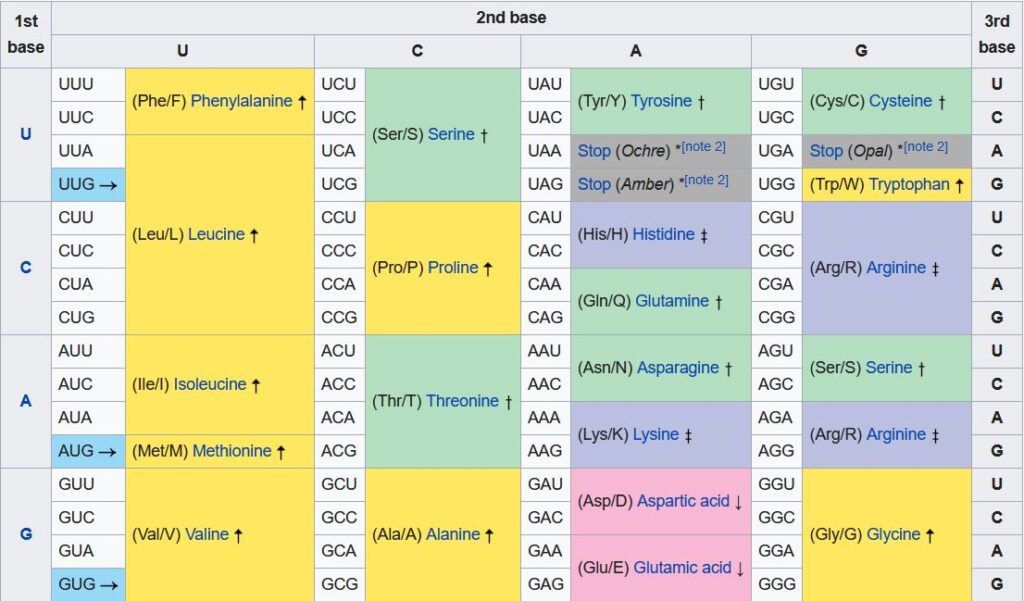
Thus a triple which reads GCC would result in alanine being added to the protein chain, and so on. The order of the bases in the codon matters, and also it is important to note that if the “reading frame” is shifted by a base pair, the product is different. Thus CUUAGUGGU codes for leucine followed by serine and then glycine, but if a base is removed from the beginning of the sequence, the resulting UUAGUG… codes for leucine followed by valine.
This then is known as the central dogma of molecular biology, stated in very simplified form as

The arrows designate information flow. All life on earth relies on this.
As an aside, there are occasions when information flows from RNA to DNA. So-called retroviruses such as HIV contain RNA. Part of that RNA codes for a special enzyme known as “reverse transcriptase”. This converts the viral RNA to DNA which is then inserted into the target cell DNA for replication by the host cell when it replicates. Sneaky! Coronaviruses such as COVID-19 are also RNA viruses but they code for enzymes which replicate the RNA to RNA, they don’t usually get inserted into the host DNA.
GMOs and gene editing techniques all rely on modifying the DNA sequences to produce a desired product. That product will tend to involve the plant (usually) cells producing proteins the native plant type cannot or does not.
Dominoes
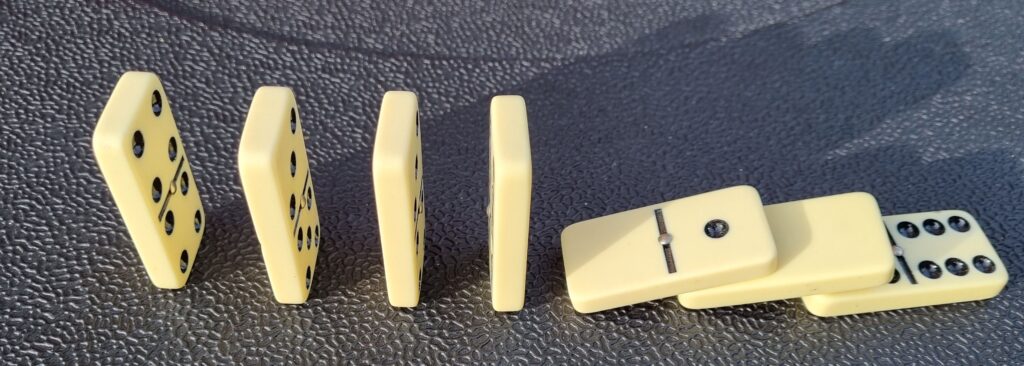
The inter-related nature of world trade is often mentioned when things go wrong. For instance when in 2021 EVER GIVEN became wedged in the Suez Canal, there were significant knock-on effects felt worldwide.
The current conflict in the Ukraine is another example. A substantial amount of grain including sunflower seeds, maize and wheat comes out of Black Sea ports. Currently a number of vessels are stranded in Ukraine ports unable to leave and caught in the conflict. The disruption to the world food supply is becoming widely known.
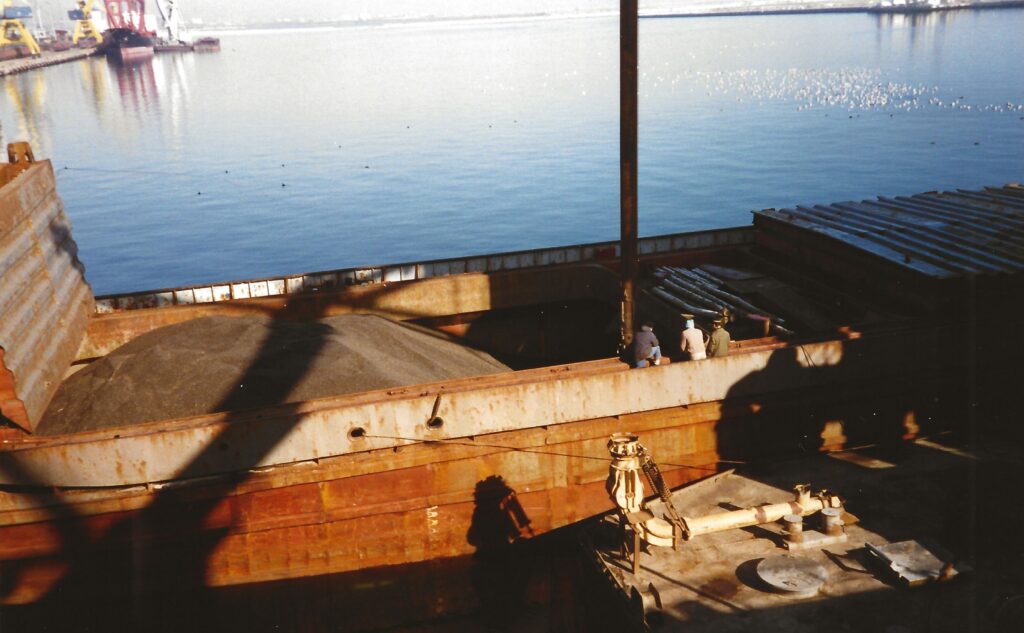
As an example of the consequences, take a look at the supermarket shelves for cooking oil next time you shop. It appears that sunflower oil is becoming difficult to get hold of. Instead the shelves might carry non-specific vegetable oil which may contain rapeseed oil. Fields of yellow oilseed rape plants used to be a common sight in the UK, but in recent years less acreage has been devoted to this crop because of a ban on neonicotinoid pesticides implicated in causing problems for bees. Will we start to increase the amount of rapeseed planting? Maybe.
Another alternative is palm oils. The environmental implications of large palm plantations are frequently stated and are widely accepted, but the plant does produce a number of oils which have multiple uses. However, the Indonesian government has recently announced a ban on palm oil exports. This is reportedly being put in place to ensure that sufficient supplies of oil are available for domestic use in Indonesia.
One to watch out for may be coal. The industrial revolution was driven forward by coal, and the steam railway engines which used to power across the British landscape were raised on a diet of coal mined in these islands. Heritage railways are already reporting difficulties in operating as a consequence of the bans on imports from Russia, and are even exploring using rapeseed sourced fuel. Steel producers also require coal. Earlier this year there was a temporary ban imposed locally on the export of coal from Indonesia. Will that be repeated now other sources are under pressure because of the conflict?
A possible consequence of these supply shortages and market disruption is that avoidable shortcuts might be taken in the shipment of commodities leading to problems during carriage. The carriage of coal has a number of associated hazards – self-heating, gas evolution, fires, liquefaction. Similarly, carriage of vegetable oils can give rise to substantial claims – contamination, admixture, overheating and oxidation, water damage and increase in free fatty acids.
Not the Tai Prize
It has recently been in the news in shipping circles that permission has not been granted for the TAI PRIZE dispute to be taken to the Supreme Court, and so the Court of Appeal judgement is the final word on the matter.
I wasn’t involved in the TAI PRIZE and I am not aware of the finer details of the case and what facts the arbitrator and judges had at their disposal. So, I’m not going to write about the TAI PRIZE, or the legal issues it deals with, but I am going to talk about soya beans and “apparent good order and condition”.
I have been inspecting cargoes of soya beans for more years than I’d like to say. It seems to be a commodity which causes a great deal of trouble worldwide. In recent years, the focus of many claims has been the trade from Brazil to China, but there have been plenty of cases involving soya beans of different origin and in different discharge ports.
As with agricultural materials generally, there is a tendency for soya beans to deteriorate microbiologically when overmoist. Unlike many other commodities, soya beans have a relatively large oil content. When vegetable oils oxidise, the chemical reaction releases heat. That means that soya beans can self-heat to rather higher temperatures than maize or rice. At elevated temperatures, further chemical reactions between proteins and sugars which result in the beans discolouring through a variety of shades of beige to brown and eventually black. These are known as Maillard reactions (nothing to do with ducks!) and they are also the reactions which take place when food is cooked.
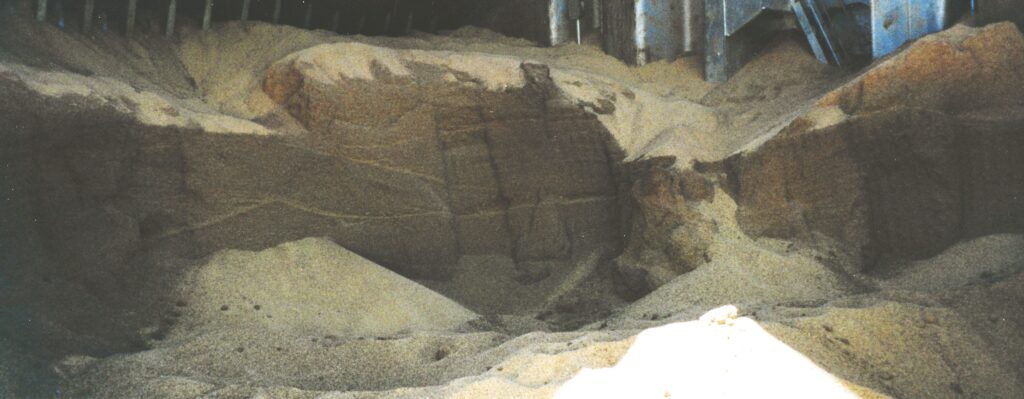
People doing my sort of work tend to give presentations exhibiting lots of dramatic photographs like the above. They make good slides in powerpoint presentations! But these are photographs of holds in which there has been a major problem with soya beans. They aren’t representative of normal shipments.
Incidentally, the phrase “burned” is often bandied about to describe beans which are heavily darkened or even blackened. To actually set soya beans on fire requires quite a bit of effort, but it can be done. They then will burn, slowly. Heavily darkened beans where the darkness has arisen by means of elevated temperatures created by self-heating, and the Maillard reactions which result, are not burned.
And so to the “apparent good order and condition” point. This term has a legal meaning which hangs on the word “apparent” – it relates to what can be seen by normal inspections by a ship’s Master and the crew during loading.
The most recent grain case I have handled had just under 45000MT of grain loaded in 49 hours. That is on average just over 900MT an hour. A single soya bean weighs about 0.15g. So in each hour, some 6×109 beans are loaded. In American terms that is six billion; in British terms six thousand million beans.
Add to that the fact that the crew member in question might be standing by the hatch looking in. The nearest cargo is several metres away. There will be a cloud of dust hanging over the hold for much of the time, and there won’t be much chance of seeing through that cloud to notice anything much about the beans.
The first thing which definitely does not come under “apparent good order” is moisture content. This is a hugely important parameter as it plays a significant role in determining whether cargo will carry without deterioration. It isn’t a visible one, except in very extreme cases.
Soya beans which appear visibly wet would have to have a moisture content in excess of 30-40% and would be visibly saturated. However, the difference in moisture levels which give rise to problems in soya bean cargoes on ships are differences between 12%, 13%, 14% and so on. These all look identical. Very often I hear mouldy or otherwise damaged grain and soya bean cargoes referred to as being “wet”. They usually are not actually wet.
So, except in extreme cases, you can’t see problematic moisture contents. Sometimes we see recommendations for having a surveyor present to take small samples and measure moisture levels. There are portable moisture meters which can be used to get a rapid result on a ship. Obtaining a sample and using the meter might take 5 minutes if the surveyor is efficient. In that time in the example above some 75MT of cargo (500 million beans) may have been loaded. As the moisture content doesn’t have any impact on “apparent good order and condition”, what do you then do with that information? If the figures are such that an expert would tell you there is a strong chance of deterioration on a given voyage, what then do you do?
The next thing which isn’t “apparent good order” is the cargo temperature. You cannot see it. Is it a good idea for temperatures to be taken during loading? Wholeheartedly yes. There are lots of reasons why knowing the cargo temperature at loading can be useful. Soya beans which are significantly warmer than ambient temperature may represent parts of a cargo which have already started to deteriorate before shipment. That is certainly something you would want to know about, and it is likely that such cargo would also have elevated levels of mouldy or discoloured beans, and in all likelihood, an unpleasant odour.
Choosing the right thermometer for a given situation is quite important. Spear probes may be necessary for some situations and these can take time to use properly. For taking rapid and plentiful readings during loading of a cargo of soya beans, an inexpensive infra-red remote thermometer gun is ideal. These only report the temperature of the nearest surface in front of the gun, but that’s fine for such situations. Accuracy down to a fraction of a degree isn’t important but a real-time indication of whether warm cargo is being loaded can be.
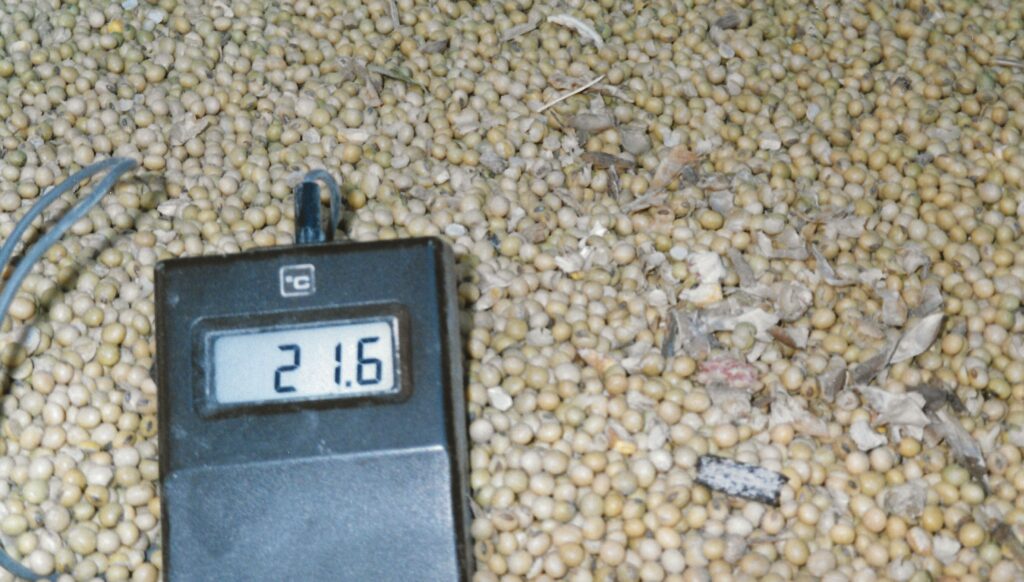
The next biggie which is not part of “apparent good order” is cargo quality. With soya beans, there are a number of parameters. Foreign material (you can see seed pods and other foreign material in the photograph above) is one. Dust and other foreign material is often airborne during loading and it settles into a layer on top of the cargo during a break in loading. Those layers can often be seen in and amongst the cargo when it has heated – see the top photograph earlier in this article. Sales contracts have allowances for foreign material, and also other parameters such as split beans, heat damaged beans, and so on. To measure the levels of these it is necessary to take representative samples and have them analysed. This is well beyond the scope of what would be considered part of the duties of the crew during a loading, and quality matters are not relevant considerations for “apparent good order and condition”, even though the individual items of foreign material and the split beans etc are visible to the unaided eye.
So, having discussed a few categories of issue which are not “apparent good order and condition” items, and having said that quality parameters are not, what about a part of the cargo where the beans are discoloured, or mouldy, etc? This is where it gets more complicated. An example of an assembly consisting exclusively of darkened beans, or where such beans are in a majority, is in the top photograph above and the two below.
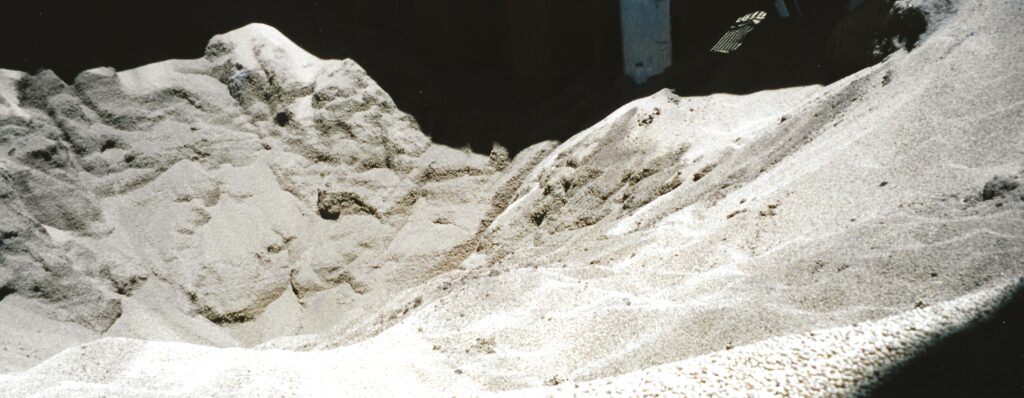
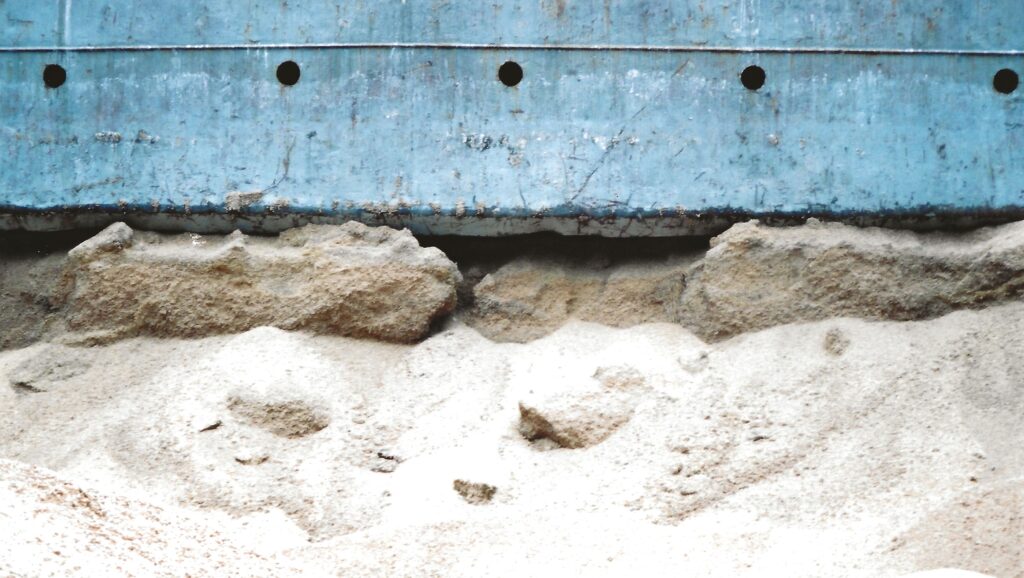
These photographs were taken during a cargo discharge, but if a significant quantity of such beans was loaded into one part of a ship’s hold, and then that inspected, it may well be considered not to be in “apparent good order and condition”. That is because a parcel of discoloured beans does not look like a normal parcel of soya beans.
What’s the likelihood of something like that being spotted? Answering that is much more difficult. The rapid rates of loading typical at grain terminals and the dust generated make it very difficult for even gross problems such as these to be detected. It would be very easy for even a large parcel of discoloured beans to be loaded and covered with other cargo without even the most attentive crew member noticing the problem.
Experts analysing evidence from a discharge may make the judgement that the cargo deteriorated because of its inherent condition (so-called inherent vice). Deciding that a certain parcel of cargo was already damaged at the time of loading is very much harder to do. Sometimes the evidence does suggest this. It is very much more difficult again to determine whether that could or should have been detected at loading.
George Marriott and RMS CARMANIA

Today we’re thinking of our great-great uncle George Gascoigne Marriott who died in New York on 9 May 1918. George was a steward on Cunard’s Carmania, used at that time for troop transportation, and he was amongst the first wave of those who died during the so-called “Spanish” flu pandemic. George lived in sight of Liverpool, overlooking the Mersey.
The Carmania sailed from the city on 19 April 1918 and arrived in New York on 28 April. George was taken to St Vincent’s Hospital there on 2 May and died a week later. The Carmania was a Cunard steam turbine ocean liner. Her maiden voyage was from Liverpool to New York on 2 December 1905. She had berths for 2,650 passengers.
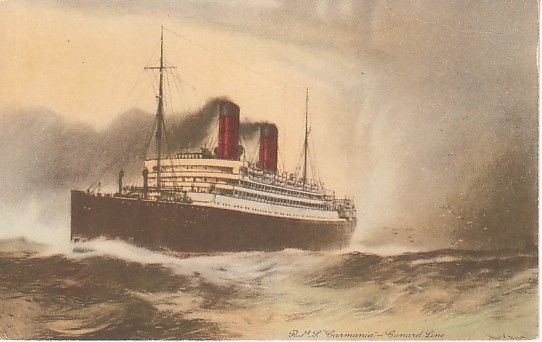
During World War 1 she was converted and became an AMC (Armed Merchant Cruiser) engaging with (and sinking) the SMS Cap Trafalgar (also a converted ocean liner) in 1914. An odd coincidence is that the Cap Trafalgar was disguised as the Carmania at the time!
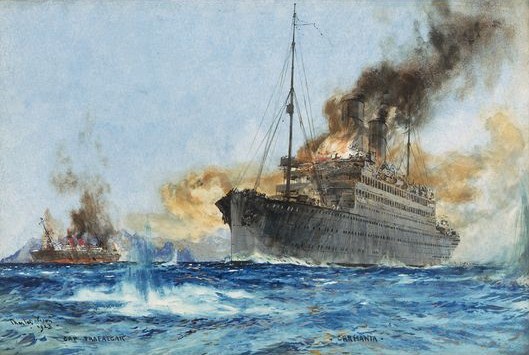
From July 1916 Carmania was a troop ship, taking mainly Canadians home from war in Europe. George Marriott had been invalided out of the war in late 1917 and his trip to New York was the first, sadly last, job of his new civilian life.
Ironically, the recent pandemic meant we had to postpone our plans to visit George’s grave, but we hope one day to see his final resting place near other Cunard employees in Bay View Cemetery, New Jersey.
The depiction of the modern Liverpool skyline and Mersey ferries is by local artist Collette Collinge.
Chain Reactions – Fertiliser
One of the most interesting concepts arising out of the science of carriage of goods at sea is the phenomenon of bulk behaviour being different to the lab-scale behaviour of a commodity. Later articles will keep returning to this theme, but today’s topic is chain reactions, and one in particular which can take place on ships with disastrous consequences.
In this article, I will use the term chain reaction to refer to a chemical or physical reaction where some of the products of the reaction are the same as the reactants themselves.
One spectacular example of this is nuclear fission. One particular uranium isotope has the property that, when its nucleus is hit by a neutron, it splits into two smaller fragment nuclei, releasing three neutrons and energy. Each of those three neutrons can, in theory, cause fission of another uranium nucleus, leading to a chain reaction which can rapidly release enormous amounts of energy – a nuclear explosion. Nuclear reactors use chain reactions but have control rods to absorb some of the neutrons to slow the chain reaction down to desirable levels.
Nuclear reactions on cargo ships are, fortunately, unlikely! Chain chemical reactions can occur on ships, and the results are very problematic.
The cargo this article will focus upon is a particular category of fertiliser. Lots of fertilisers are carried by ships in bulk, usually with no ill effects. Fertilisers in general are categorised by the amounts of nitrogen (chemical symbol N), phosphorus (P) and potassium (K) they contain as these three elements supply much of the inorganic mineral requirements for growing plants. The form in which the N, the P and the K are present influences how readily it can be taken up by the plant and used. Compound fertilisers are often called “NPK fertilisers”.
Nitrogen can be present in a number of forms, including as positively charged ammonium ions (NH4+) or negatively charged nitrate ions (NO3–). Ammonium nitrate, NH4NO3 contains both of these types of nitrogen and is a highly desirable source of nitrogen in fertilisers. Unfortunately, ammonium nitrate is not only unstable, but it forms mixtures with combustible materials which are potent explosives. Carriage of ammonium nitrate is therefore highly regulated by the IMO in packaged form and in bulk.
There are a number of schedules in the IMSBC Code for different types of ammonium nitrate. I’m not going to discuss them all in detail here – if you have a query regarding carriage of ammonium nitrate materials or fertilisers generally, please do get in touch. However, some of the less hazardous materials containing ammonium nitrate are classified as “ammonium nitrate based fertiliser”. One of these is a “non hazardous” Group C bulk cargo schedule. Group C cargoes in the IMSBC Code have no designated chemical hazard requiring special precautions.
The criteria for being considered non-hazardous are set out in the IMSBC Code and do not make easy reading. The clause we are concerned with here is this one
uniform ammonium nitrate based fertilizer mixtures of nitrogen, phosphate or potash, containing not more than 70% ammonium nitrate and not more than 0.4% total combustible organic material calculated as carbon or with not more than 45% ammonium nitrate and unrestricted combustible material. Fertilizers within these composition limits are not subject to the provisions of this schedule when shown by a trough test … that they are liable to self-sustaining decomposition or if they contain an excess of nitrate greater than 10% by mass
IMSBC Code 2020 edition
Phew! Put in simple terms, to be non-hazardous, your ammonium nitrate fertiliser must not “fail” the trough test. The trough test is a test designed to detect fertilisers capable of undergoing self-sustaining decomposition (SSD). Self sustaining decomposition is a chain reaction which some compound NPK fertilisers which contain ammonium nitrate can undergo. Here, the chain reaction is the thermal decomposition of the fertiliser. When exposed to heat, the fertiliser granules decompose, releasing toxic nitrogenous gases and some heat.
These decomposition reactions only take place when the substance is heated. The heat evolved by the reaction taking place within a cargo can then travel to adjacent granules and cause them to decompose – and hence a chain reaction. In a fertiliser undergoing self-sustaining decomposition, that reaction can continue even when the source of heat is subsequently removed, and it can spread through a bulk.
Crucially, it is the interplay between
- how much heat is required to initiate the decomposition
- how much heat is released from the reaction
- how much inert (non decomposing) material there is in the cargo
- and how easily heat released can be lost to the surroundings
which governs whether the chain reaction can be sustained or will just die out.
The principle of the trough test is straightforward. The trough itself is a gauze mesh constructed to specific dimensions specified by the test method. The trough is filled with the fertiliser being tested and one end is heated until the heated fertiliser decomposes. The material “fails” the test if decomposition then propagates down the length of the trough.
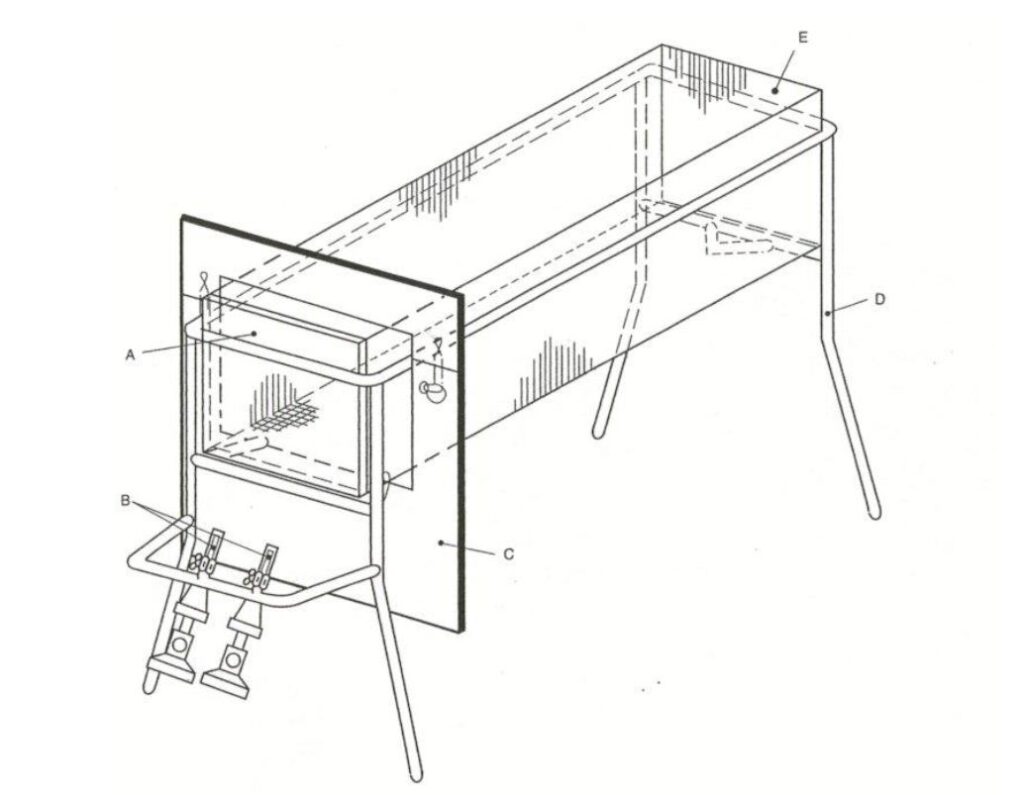
Here is a photo of a trough test taking place. The wires in the photograph are for thermocouples to detect temperature rises, but you can see if decomposition propagates just by looking at the sample in the trough.
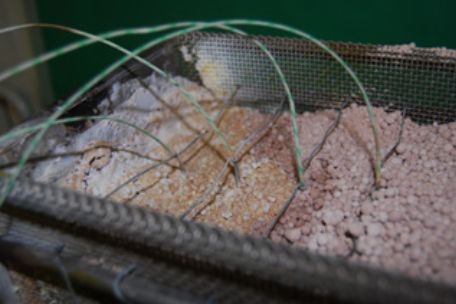
On a ship, self-sustaining decomposition tends to be initiated by a heat source as simple and straightforward as a cargo lamp or bulkhead lamp in a hold. It is an unfortunate fact that many cargo fires on ships are started by lights – that fact itself is an important enough topic to require an article of its own.
By the time the problems are detected, the situation in the hold tends to be very well established. Copious amounts of fumes are emitted, resulting in crews having to abandon ship, and some vessels have even been destroyed. It is very easy to find spectacular images on line of enormous plumes of gases, some of them toxic, emanating from vessels such as CHESHIRE, PURPLE BEACH, OSTEDIJK, and others. These vessels loaded parcels of ammonium nitrate fertiliser, non-hazardous, in each case certified by means of the trough test as non-hazardous. So was the cargo in the trough in the photo above. During the test being carried out in the photo above, despite repeated test runs, no significant propagation of decomposition was ever seen.
In each case then, significant events involving self-sustained decomposition of large amounts of fertiliser took place despite the cargo purportedly not being capable of that reaction.
As a result of the CHESHIRE incident, the Isle of Man Ship Registry published an incident report which contained the following very telling extract
1) A thermal decomposition of the Ammonium Nitrate Based Fertiliser (non-hazardous) cargo commenced and despite arrest attempts being made, continued to its conclusion on board Cheshire.
2) Guidance submitted to the IMO by fertiliser industry bodies emphasises that ammonium based fertilisers can be safely transported, provided existing safeguards are followed. These safeguards are evidenced as having been carried out on Cheshire, yet a thermal decomposition still initiated.
3) The UN S.1 “trough test” is used to determine self-sustaining decomposition properties of ammonium nitrate based fertiliser to classify the Cargo Group. The individual grades of cargo carried on Cheshire passed the S.1 test and were thus classified as “Cargo Group C” (non-hazardous) six months prior to shipment on Cheshire.
IOM Ship Registry Casualty Investigation Report CA 128
The report called for research into whether the trough test is appropriate for fertiliser in bulk. Intercargo reportedly stated that “it is clear from the Cheshire incident that this cargo, or at least some of the ammonium nitrate-based fertilizers shipped as this cargo, should not be treated as group C”.
The problem associated with the trough test seems to be that heat is too readily lost from the material in the trough. The purpose of the test is to provide a lab-scale means of detecting whether self-sustained decomposition can take place in large bulks. It doesn’t reliably do that in all cases.
Late in 2021, litigation regarding the CHESHIRE in the Norwegian Appeal Court was reported by law firm Simonsen Vogt Wiig. They say that the Appeal Court concluded amongst other points that the cargo had been correctly classified in accordance with the IMSBC Code and that the hold lighting system should have been disconnected prior to the voyage. The fertiliser manufacturers thus were reportedly successful against the vessel Owners and Charterers.
We therefore have a situation where a cargo can be categorised as “non-hazardous” because it passes the mandated test (by not exhibiting a certain property in the lab conditions). However, the actual cargo then exhibits that property on the voyage. Simonsen Vogt Wiig say that the loss associated with the Appeal Court judgement was at least USD 30 million.
Carrier beware!
Cocoa – commodities and their carriage
As most people will be aware, chocolate comes from cocoa, a product of the plant Theobroma cacao. Most chocolate we consume is sweetened to Western tastes and may contain significant amounts of milk. Chocolate makes use of fats extracted from cocoa. These fats take on a number of crystalline forms at room temperature and have melting points such that chocolate begins to melt and soften in the mouth. These physical properties contribute to the experience of eating chocolate which make it so pleasant.
Cacao trees are grown and harvested in countries in South America, West Africa and also in Indonesia. Most processing takes place elsewhere, requiring cocoa materials of various types to be shipped to those locations.
Cocoa beans form embedded in a fleshy pulp, in pods on the cocoa tree. The harvested beans are subjected to a process known as fermentation, generally in the country of harvest. The fermentation process is an essential stage in developing the flavours and colours we associate with chocolate. Traditionally, it takes place in wooden boxes covered with banana leaves. It is actually the pulp which undergoes the fermentation (i.e. microbiological activity) but the temperatures produced and the enzymes present give rise to a series of biochemical changes within the beans without which we wouldn’t have chocolate.
Once fermented, the beans are dried to below about 7-8% moisture. If this isn’t done, they would deteriorate rapidly and would go mouldy. Traditionally, the beans were then bagged, using jute fibre bags. This was the form of bagged cocoa familiar for many years, often carried on ‘tweendeckers, but now more commonly placed into shipping containers.
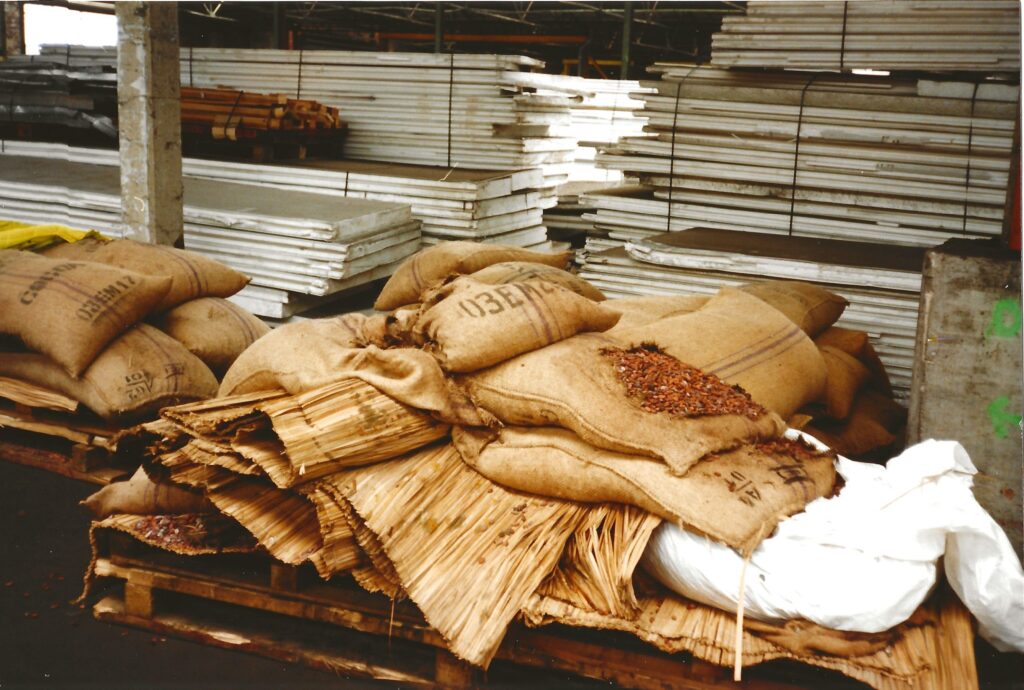
Because cocoa is a high value agricultural commodity, cargo care during carriage is very important. Invariably, bagged or bulk cocoa beans are shipped from a tropical country and are inherently warm when shipped. The beans do not conduct heat to any significant extent and so except at the periphery of a stow, they will retain their heat as shipped throughout a voyage. That is an inevitability, and isn’t a problem except when the ship happens to sail somewhere in a colder climatic region. As large amounts of cocoa processing takes place in Western Europe and North America, there is a likelihood that at least for some parts of the year, shipments of cocoa will indeed be exposed to lower ambient temperatures during a voyage, often substantially so. That’s when the problems can start.
Those problems are associated with condensation – ship’s sweat. That is condensation forming on the steel structures around a cargo when those structures are cooled by external cold temperatures. The condensation can then wet bags of cocoa, leading to the beans going mouldy. With each bag having a value of $100 or more, it is important to prevent condensation as much as is possible. That requires ventilation and correct stowage. Appropriate, efficient ventilation and stowage to avoid contact with steel structures are both crucial to the safe carriage of cocoa beans.
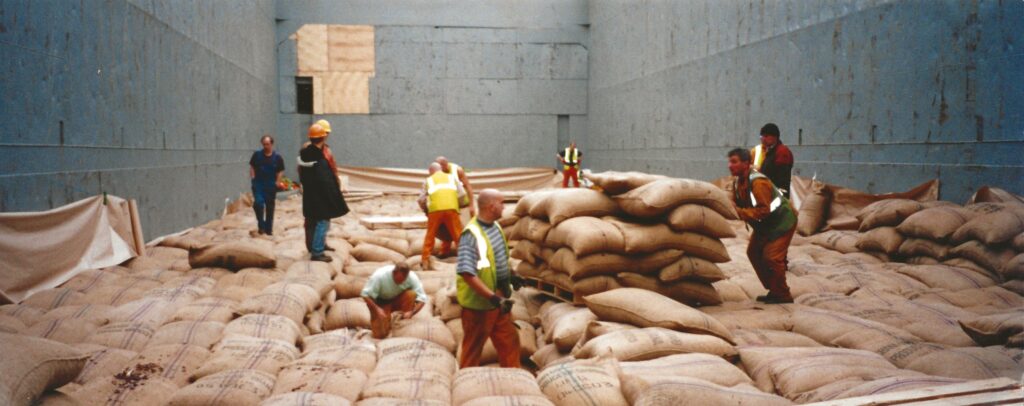
One of the subsequent stages in cocoa processing involves grinding the beans. This releases fats from the cellular structure of the cocoa plant and produces a substance known as cocoa liquor. Although the name might suggest this is alcoholic, it is not. It is a dark brown solid at room temperature, with the appearance and taste of unsweetened plain chocolate. Cocoa liquor is sometimes carried by ships in blocks, wrapped in plastic sheeting and placed into sturdy cardboard boxes.
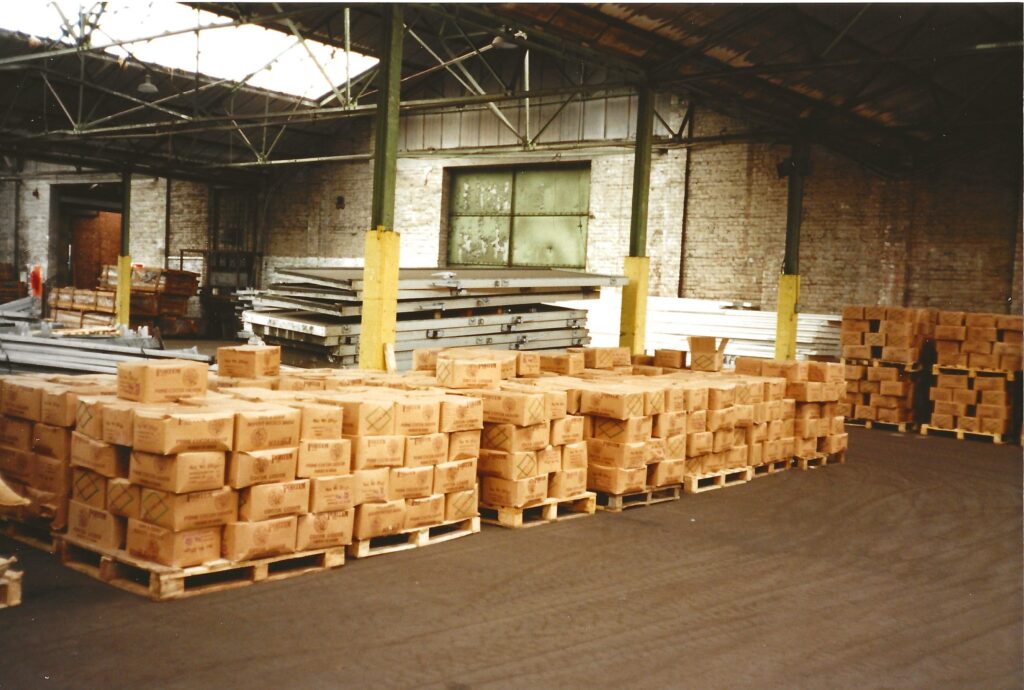
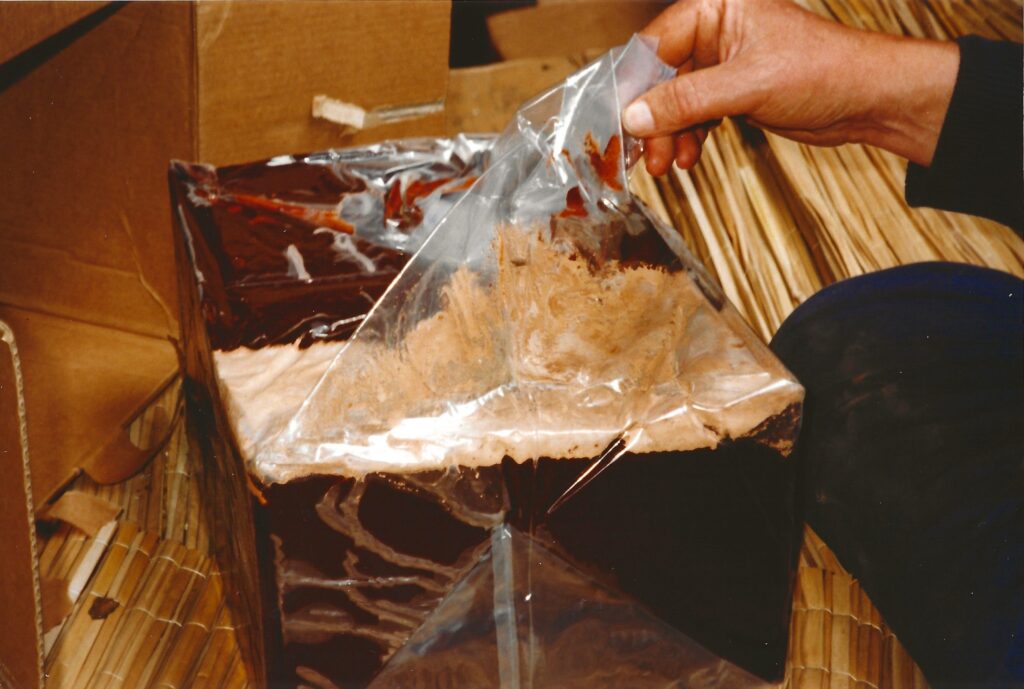
Cocoa liquor can be subjected to a process known as “pressing”. This separates the fats from the cocoa mass/solids. Cocoa fats are known as cocoa butter, pale yellow in colour. Blocks of cocoa butter are packaged similarly to cocoa liquor and carried in shipping containers. The residual cocoa mass after pressing is dark brown in colour and produces the cocoa powder familiar to bakers.
Cocoa fats carried in block form (cocoa liquor or cocoa butter) require careful handling to avoid exposure to heat. Although the blocks are packaged within cardboard boxes, if the contents soften or melt the cartons can collapse leading to handling problems. All cocoa products are sensitive to taint – ships or containers must be clean and free from odours.
Chocolate producers will use blended mixtures of cocoa solids, cocoa butter and cocoa liquor, together perhaps with sugar, milk solids and lecithin to produce different types of chocolate (plain chocolate, milk chocolate, white chocolate). Lecithin is a phospholipid extracted during the degumming of some edible oils such as soya bean oil.
Finally, it is important to know your commodity. It may seem obvious but the properties and behaviour of different commodities produced from cocoa depends on the fundamental physical and chemical parameters of those commodities. Understand these, and apply good cargo care to avoid problems.